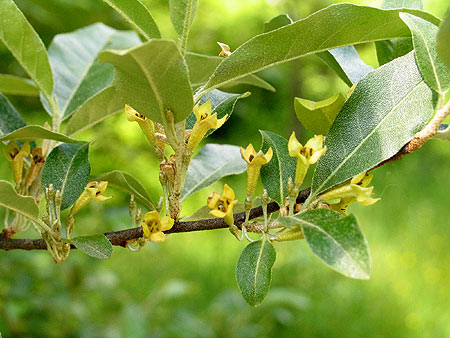Autumn-olive is listed among the top 10 exotic pest plants in Georgia, and among "highly invasive species" (species that may disrupt ecosystem processes and cause major alterations in plant community composition and structure and that establish readily in natural systems and spread rapidly) by the Virginia Department of Conservation and Recreation. It is listed as a Category II exotic plant species (considered to have the potential to displace native plants either on a localized or widespread scale) by the Vermont Agency of Natural Resources and The Nature Conservancy of Vermont , and as a noxious weed in several West Virginia counties .
U.S. Forest Service Region 8 (Southern Region) lists autumn-olive as a category 1 weed (exotic plant species that are known to be invasive and persistent throughout all or most of their range within the Southern Region and that can displace native plant species). The introduction of Category 1 Species is prohibited on National Forest System Lands .
Autumn-olive has been promoted as a beneficial wildlife species and planted in wildlife management areas in the eastern U.S. to provide food and cover. Fruit remains on the plant until late winter, potentially becoming an important wildlife food during periods of seasonal food scarcity. Fruits are consumed by a variety of wildlife, including songbirds, northern bobwhite, ruffed grouse, mourning doves, ring-necked pheasants, wild turkeys, mallards, raccoons, skunks, opossums, and black bears. Songbirds that eat autumn-olive fruit include: gray catbirds, hermit thrushes, wood thrushes, house finches, American robins, cardinals, cedar waxwings, common grackles, evening grosbeaks, fox sparrows, house sparrows, song sparrows, white-throated sparrows, mockingbirds, myrtle warblers, purple finches, rufous-sided towhees, starlings, tree swallows, and veerys. Autumn-olive is also browsed by white-tailed deer.
 Autumn Olive
Autumn Olive